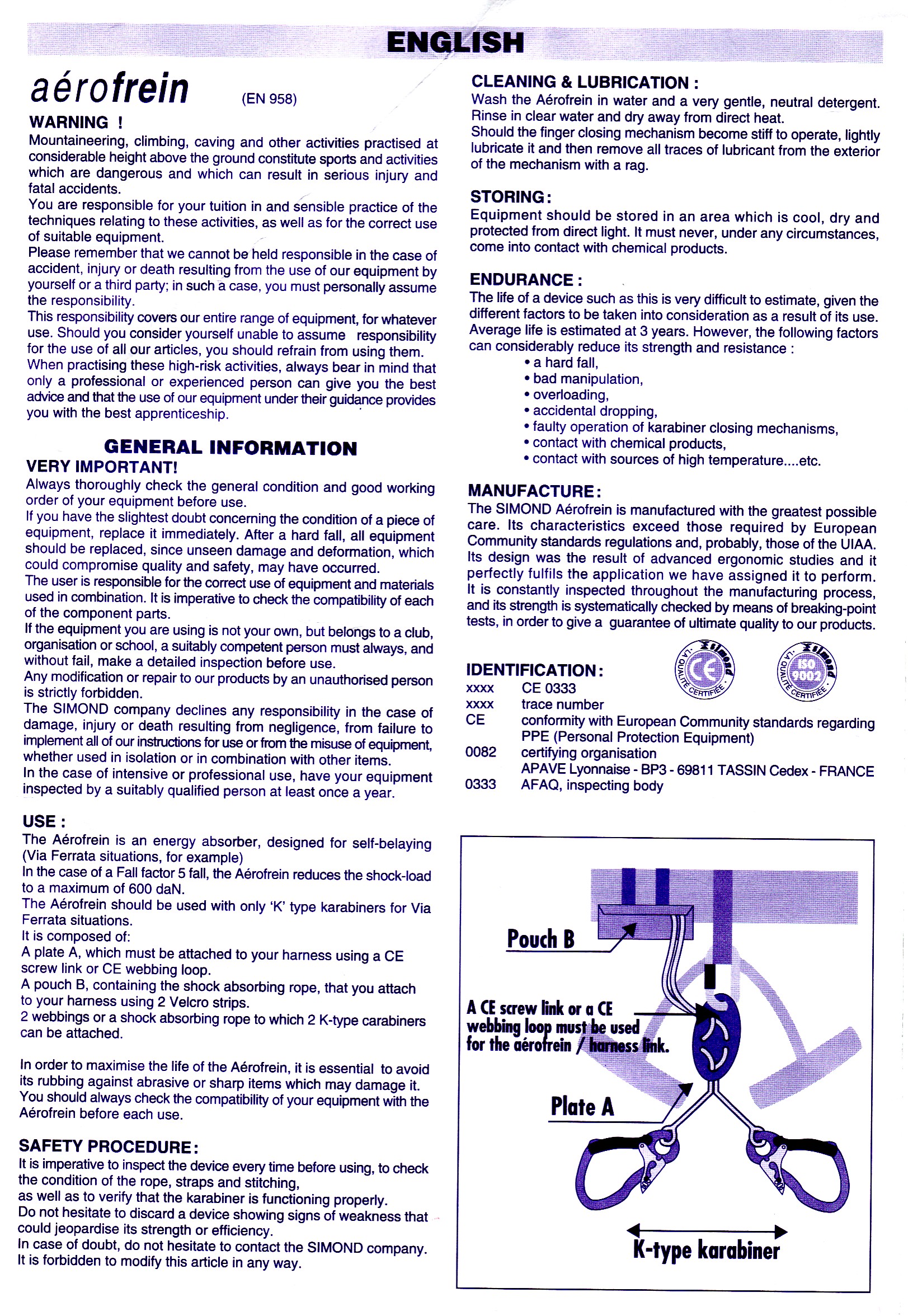Technical Details
 I acquired my Simond Aerofrein from Inner Mountain Outfitters in 2003.
I acquired my Simond Aerofrein from Inner Mountain Outfitters in 2003.
My Simond Aerofrein kit weighs 576 g. The brake plate is 46 mm. long, 87 mm. wide, 8 mm. thick. It is aluminum with
seven holes drilled in it. Two are 15.7 mm. double-strand holes, four are 9.0 mm. single-strand holes, and one is a 15.8 mm. hole for the webbing loop. There is a 14 cm. loop of webbing sewn
to the plate to provide a tie-in point. The 9 mm. cord has a loop
sewn at each end and covered with plastic to protect the stitching.
Each loop passes through the eye of a large snap hook. The two
ends of the cord are also sewn together just above the plate,
as seen in the photo. The minimum distance between the plate and
the hook is about 85 cm. The remaining cord (about 220 cm. ) is
stored in a small belt pack provided with the kit.
One side of the plate is printed with the Simond logo; the other with "CE03333"and "406 02."
The Simond Aerofrein is designed as a dynamic cow’s tail for
use on via ferrata. It is a particularly convenient kit that stores the excess cord in a way that it can run freely if needed, but is not a nuisance when it is not.
History
The Simonds were a family of man ybrothers working as blacksmiths and who lived in or near Les Bossons, France (near Chamonix). They made farming equipment and cowbells for generations, but gradually began to produce mountain tools for climbers coming from England to explore Mont Blanc.
The Simonds began making ice axes in the 1860s. At that time, their axes had no inscriptions. Eventually the brothers Adolphe (dates unknown) and François (1867-1946) began to mark the axes. head. began to dedicate his work to designing and producing mountaineering equipment such as ice axes and crampons while Adolphe focused on making cowbells and other items.
Francois’s son Claudius (1905-1984).started working in 1925. Under him, Simond soon became a global name in the world of high-altitude mountaineering equipment. After World War II, the business was named after him.
In 1960, Claudius’ son Ludger took over. Since around the 1975s, the ice axes moved to a mass-produced metal shaft, and the form of forged and handmade axes ceased to exist. Ludger built a new headquarters at the foot of Mont Blanc in 1988. He sold his company to Wichard in 2004. In 2008, Decathlon became the sole shareholder of Établissements Simond.

For far more content, use a larger monitor and a full-width window.
Hundreds of cell phone users complained and asked me to for a simpler, mobile friendly site. In particular, they wanted me to limit each page to a small number of pictures and minimize my use of text. This new site provides what they asked for.


